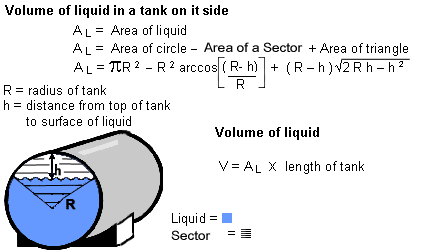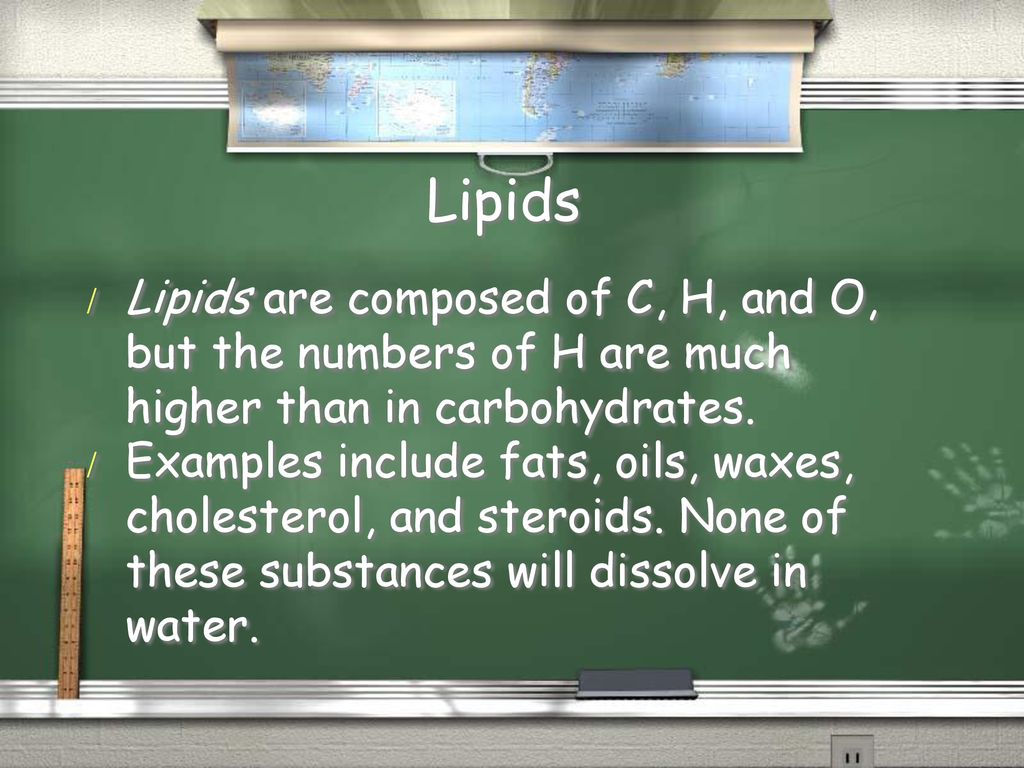8 Steps to Calculate Tank Volume

Calculating the volume of a tank is a fundamental task in various industries, from engineering and construction to environmental monitoring and water management. Accurate volume calculations are essential for a wide range of applications, including determining the capacity of storage tanks, designing efficient fluid handling systems, and ensuring compliance with regulatory standards. This comprehensive guide will walk you through the 8 crucial steps to accurately calculate the volume of a tank, providing a detailed understanding of the process and its significance.
Step 1: Understand the Tank Geometry

The first step in calculating tank volume is to thoroughly understand the geometry of the tank. Tanks can come in various shapes and sizes, including cylindrical, rectangular, spherical, and even more complex designs. Each type of tank geometry has its own unique characteristics and calculation methods.
For instance, a cylindrical tank, often used for storing liquids like water or petroleum products, has a circular cross-section and a specified height. The volume of a cylindrical tank can be calculated using the formula: V = πr²h, where r is the radius of the circular base and h is the height of the tank.
On the other hand, a rectangular tank, commonly employed for storing dry bulk materials like grains or chemicals, has a rectangular cross-section and a specified length, width, and height. The volume of a rectangular tank is given by the formula: V = lwh, where l is the length, w is the width, and h is the height of the tank.
Key Considerations for Tank Geometry:
- Identify the type of tank (cylindrical, rectangular, spherical, etc.)
- Measure or obtain the precise dimensions, including radius, diameter, length, width, and height.
- Consider any internal obstructions or protrusions that may affect the usable volume.
- Note any special features like conical or dome-shaped tops, which require specific calculation methods.
Step 2: Gather Necessary Data and Specifications

To accurately calculate the volume of a tank, you need to gather all the relevant data and specifications. This information will vary depending on the type of tank and its intended use.
For a cylindrical tank, you’ll need the following data:
- Radius ®: The distance from the center of the circular base to its edge.
- Height (h): The vertical distance from the bottom to the top of the tank.
- Wall Thickness: The thickness of the tank’s walls, which is crucial for structural integrity and volume calculations.
For a rectangular tank, the required data includes:
- Length (l): The distance from one end of the tank to the other along its longest side.
- Width (w): The distance from one side of the tank to the other along its shortest side.
- Height (h): The vertical distance from the bottom to the top of the tank.
- Wall Thickness: Similar to cylindrical tanks, wall thickness is important for structural considerations.
Additional Specifications to Consider:
- Material of Construction: Different materials have varying densities and properties, which can impact the overall volume and weight calculations.
- Temperature and Pressure Conditions: Extreme temperatures or high-pressure environments may affect the tank’s dimensions and volume.
- Tank Level Indicators: These devices provide real-time data on the liquid level within the tank, aiding in volume calculations and monitoring.
Step 3: Choose the Appropriate Calculation Method
The choice of calculation method depends on the tank’s geometry and the level of accuracy required. Here are some common calculation methods for different tank types:
Cylindrical Tanks:
- Simple Cylindrical Tank Volume: For basic cylindrical tanks with a flat top and bottom, use the formula: V = πr²h.
- Conical Top Cylindrical Tank Volume: If the tank has a conical top, adjust the height to account for the slope. The volume formula becomes: V = πr²(h + (tan(α) * r)), where α is the cone angle.
- Dome-Shaped Top Cylindrical Tank Volume: For tanks with a dome-shaped top, the volume calculation is more complex and often involves integrating along the curved surface. This may require specialized software or mathematical tools.
Rectangular Tanks:
- Basic Rectangular Tank Volume: For simple rectangular tanks with flat tops and bottoms, use the formula: V = lwh.
- Rectangular Tank with Conical Bottom: If the tank has a conical bottom, the volume calculation is similar to the cylindrical tank with a conical top. Adjust the height and integrate along the curved surface if necessary.
- Complex Rectangular Tank Shapes: Tanks with irregular shapes or internal obstructions may require more advanced calculation methods, such as using computer-aided design (CAD) software or finite element analysis (FEA) tools.
Step 4: Account for Wall Thickness and Headspace
When calculating tank volume, it’s crucial to consider the wall thickness and any headspace above the liquid level. Wall thickness directly affects the usable volume of the tank, as it occupies space within the tank’s dimensions.
To account for wall thickness, subtract the wall thickness from the internal dimensions of the tank. For example, if a cylindrical tank has an internal radius of r and a wall thickness of t, the effective radius for volume calculation becomes (r - t).
Headspace refers to the space above the liquid level within the tank. This space is necessary to accommodate changes in liquid volume due to temperature variations, pressure fluctuations, or the addition of vapors. To calculate the usable volume, subtract the headspace volume from the total tank volume.
Example Calculation:
Given a cylindrical tank with an internal radius of 5 meters, a height of 10 meters, and a wall thickness of 0.5 meters, the effective radius for volume calculation is (5 - 0.5) meters, or 4.5 meters. The total volume of the tank is V = π(4.5)² * 10, which equals approximately 636.17 cubic meters. If the headspace is 1 meter, the usable volume becomes 636.17 - π(4.5)² * 1, resulting in approximately 576.85 cubic meters.
Step 5: Convert Units and Verify Dimensions

It’s essential to ensure that all dimensions and measurements are in consistent units before performing any calculations. Common units for tank volume calculations include meters, feet, inches, and gallons. Convert all measurements to a single unit to avoid errors.
Additionally, verify the accuracy of the dimensions by double-checking the measurements or referring to reliable sources. Inaccurate dimensions can lead to significant errors in volume calculations, especially for large-scale tanks.
Unit Conversion Example:
If the radius of a cylindrical tank is given in inches (let’s say 48 inches), convert it to meters by dividing by 39.37 (the conversion factor from inches to meters). So, 48 inches / 39.37 ≈ 1.22 meters. This converted radius can then be used in the volume calculation formula.
Step 6: Perform the Volume Calculation
Now that you have gathered all the necessary data, chosen the appropriate calculation method, and ensured consistent units, it’s time to perform the volume calculation. Use the relevant formula based on the tank’s geometry and input the accurate dimensions.
For cylindrical tanks, use the formula: V = πr²h, where r is the effective radius (accounting for wall thickness) and h is the height. For rectangular tanks, use the formula: V = lwh, where l is the length, w is the width, and h is the height.
Make sure to use a consistent level of precision throughout the calculation to maintain accuracy. Rounding errors can accumulate and impact the final result, especially for large tanks or those with tight tolerance requirements.
Calculating Volume for a Rectangular Tank:
Given a rectangular tank with a length of 12 feet, a width of 8 feet, and a height of 6 feet, the volume calculation is: V = 12 ft * 8 ft * 6 ft, which equals 576 cubic feet. If the wall thickness is 0.5 feet, subtract it from the dimensions to get the effective length, width, and height, and then recalculate the volume.
Step 7: Verify the Calculated Volume
After performing the volume calculation, it’s crucial to verify the result. Double-check your calculations and ensure that the obtained volume is reasonable and aligns with expectations.
For instance, if you’re calculating the volume of a cylindrical tank with a radius of 2 meters and a height of 5 meters, the calculated volume should be within a reasonable range, typically around 31.42 cubic meters (approximately π * 2² * 5). If the calculated volume deviates significantly from this expectation, review your calculations and dimensions.
Common Errors to Watch For:
- Incorrect unit conversions: Ensure that all units are consistent and properly converted.
- Wrong formula application: Double-check that you’ve used the correct formula for the tank’s geometry.
- Data entry errors: Mistakes in entering dimensions or specifications can lead to incorrect calculations.
- Rounding errors: Accumulated rounding errors can affect the final result, especially for complex calculations.
Step 8: Apply Practical Considerations and Safety Precautions
Calculating tank volume is not just a mathematical exercise; it has practical implications for tank design, operation, and safety. Here are some key considerations to keep in mind:
Overfill Protection:
Ensure that the calculated volume takes into account overfill protection measures. Tanks should have adequate headspace and overflow mechanisms to prevent spills or structural damage due to overfilling.
Safety and Structural Integrity:
Consider the structural integrity of the tank when determining the volume. Tanks must be designed to withstand the weight of the stored material, as well as any additional loads like wind or seismic forces. Ensure that the calculated volume does not exceed the tank’s safe operating capacity.
Environmental and Regulatory Compliance:
Accurate volume calculations are crucial for complying with environmental regulations and ensuring responsible storage of hazardous materials. Properly calculating tank volume helps prevent leaks, spills, and environmental contamination.
Regular Maintenance and Calibration:
Periodically verify the accuracy of tank volume calculations through maintenance and calibration. Regularly inspect tanks for signs of wear, corrosion, or damage that could affect their structural integrity and volume capacity.
| Tank Type | Volume Calculation Formula |
|---|---|
| Cylindrical Tank | V = πr²h |
| Rectangular Tank | V = lwh |
| Spherical Tank | V = (4/3)πr³ |
| Complex Tank Shapes | Advanced mathematical modeling or software tools |

What are some common mistakes to avoid when calculating tank volume?
+Common mistakes include using incorrect formulas for tank geometry, failing to account for wall thickness and headspace, and neglecting to convert units consistently. Double-checking calculations and verifying dimensions can help avoid these errors.
How can I ensure the accuracy of my tank volume calculations?
+To ensure accuracy, gather precise data, choose the right calculation method, and verify your calculations. Double-check dimensions, unit conversions, and formula applications. Regular maintenance and calibration can also help maintain accurate volume calculations over time.
Are there any software tools available to assist with tank volume calculations?
+Yes, there are various software tools and CAD programs designed for tank volume calculations. These tools can handle complex tank shapes, integrate multiple variables, and provide accurate results. Using specialized software can save time and reduce the risk of errors, especially for tanks with intricate designs.



